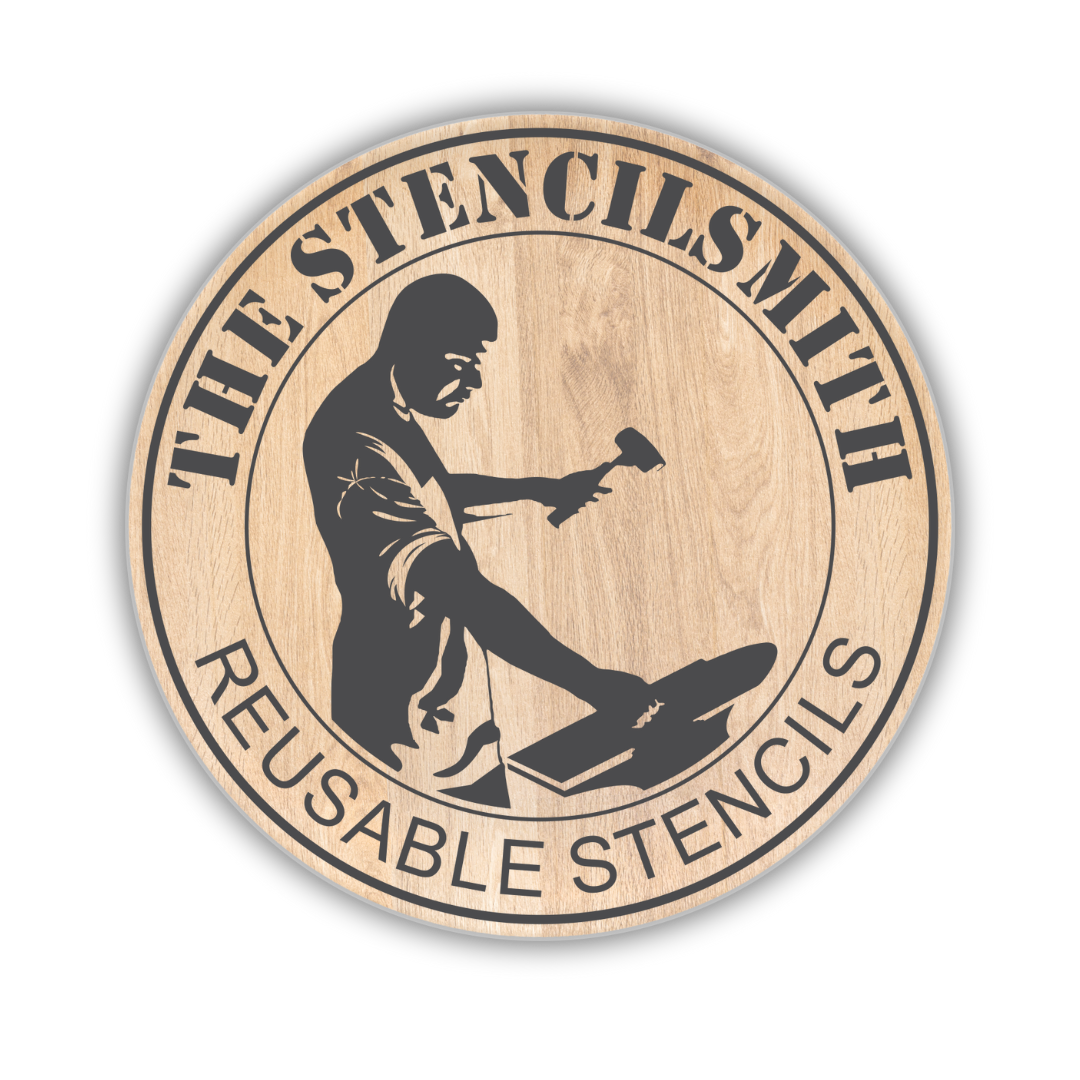How To Stencil
How to paint a wooden sign for beginners:
SUGGESTED SUPPLIES:
Wood board
Stencil brushes
Paint (acrylic and chalk paint are most common)
Foam brush or foam roller
Low Adhesive masking tape (such as painters tape)
Paper towels
OPTIONAL:
Liner Brush
Sandpaper
Wood stain
Sealant polyurethane
- PREP YOUR BOARD
Sand/smooth out any rough areas on your board. (A rough surface may cause your stencil to not lay as flat ). Make sure the surface is clean, then apply your base coat of paint or stain using a foam brush or roller (both are washable/reusable). They both smooth out and cover paint evenly with fewer strokes, helping eliminate brush marks.
*Tip: You can find pre-cut wood pieces in many craft stores or purchase wood at a local hardware store - many places will even cut your board to size for you. Or upcycle barn wood, fence posts, old cabinet doors, ect.
- POSITION YOUR STENCIL
Once board is very dry, position your stencil where you want it on your board, then secure it with some painters tape. This helps prevent stencil from shifting when stenciling. (Some use spray adhesive on the back, but tape tends to be the quickest with no mess).
- LOAD YOUR BRUSH
Squeeze a small amount of paint onto a paper plate, newspaper or scrap of wood. Lightly dip the tip of the stencil brush into the paint (do not saturate - you want just a little). Work the paint into the bristles by dabbing/swirling the paint in a fresh/dry area of your plate, then blot off any excess paint on a paper towel. It should feel almost "dry" to the touch (NOT WET) - this step is SO important, as too much paint will cause it to bleed underneath the stencil and won't produce a crisp result. Make sure there is very little paint on your brush.
- STENCILING
There are different ways to stencil. The most common is either the 'stippling' or 'swirling' technique. Stippling is tapping your brush in a straight up and down motion. Swirling is moving/swirling your brush in a continuous circular motion - this is the quickest way and most popular. Mixing this and the stippling technique also work well for blending/shading colors.
If you have a large area, start in the middle of a cut out shape and work your way out (so you can offload your paint even more in the large open areas and when you get to the edge, your brush is as dry as possible (keeping your brush "dry" helps prevent "pushing" paint against the edge, causing it to "puddle" along the edge - then the paint bleeding underneath). Paint bleeding is the most common mistake for a beginner (and most frustrating), so make sure to offload your brush and have it "dry" to the touch. Depending on how opaque your paint is (and how you want it to look in the end), will determine how many layers of paint you need. Allow each layer to dry before starting the next.
Stencil brush or sponge? We prefer brushes, but finding a quality one makes ALL the difference! We have tested brushes for many years and have come up with "the one". It's densely packed, soft but firm, holds a lot of paint, goes on smooth with no streaks and has little to no shedding! Try out our premium brushes - you won't be disappointed! Premium Stencil Brushes
There are so set rules to stenciling, so try out different techniques on some scrap wood, cardboard or even paper and see what works best for YOU!
*Tip: First project? Try stenciling with black paint. (black paint tends to be the easiest to work with, as it's the most opaque so it covers quickly with less layers - it hides "imperfections" which makes it easy to fill in bridges too).
*Tip: The swirling technique is great for making really crisp/sharp edges and covering large areas quickly. Just be careful how hard you "swirl" so you don't move/shift part of the stencil - if you have part of a stencil that sticks out, try holding it down with your fingers as you stencil around it.
- FILLING IN BRIDGES *(optional)
Bridges are designed to hold the middle of the letter in place. Without them, the middle of letters like A, O and D would fall out. The middles (also known as "islands") need to be fastened to the rest of the stencil, thus "bridges" are designed. We take a lot of time and effort designing our bridges in the correct spots to make them strong and visually appealing. Some choose not to fill them in - this is a personal preference. (We love the look of it filled in)! To do this, simply take a small liner paintbrush and dip the tip into the paint. Then lightly paint/connect the area. If you are bridging a large area (such as large letter on a jumbo sign), you could carefully tape the sides of the bridge and sponge in the open area, then remove the tape. Taking the time to connect the bridges will give your project that final polished look - you'll be happy you did!
- FINISHING *(optional)
If you want to protect your sign, you can add a coat or two of polyurethane. It can be applied with a rag, brush, foam roller and even comes in a spray can.
*Tip: if you plan to seal your project indoors, we suggest to use a water based polyurethane (as it has little to no odor and dries fast).

